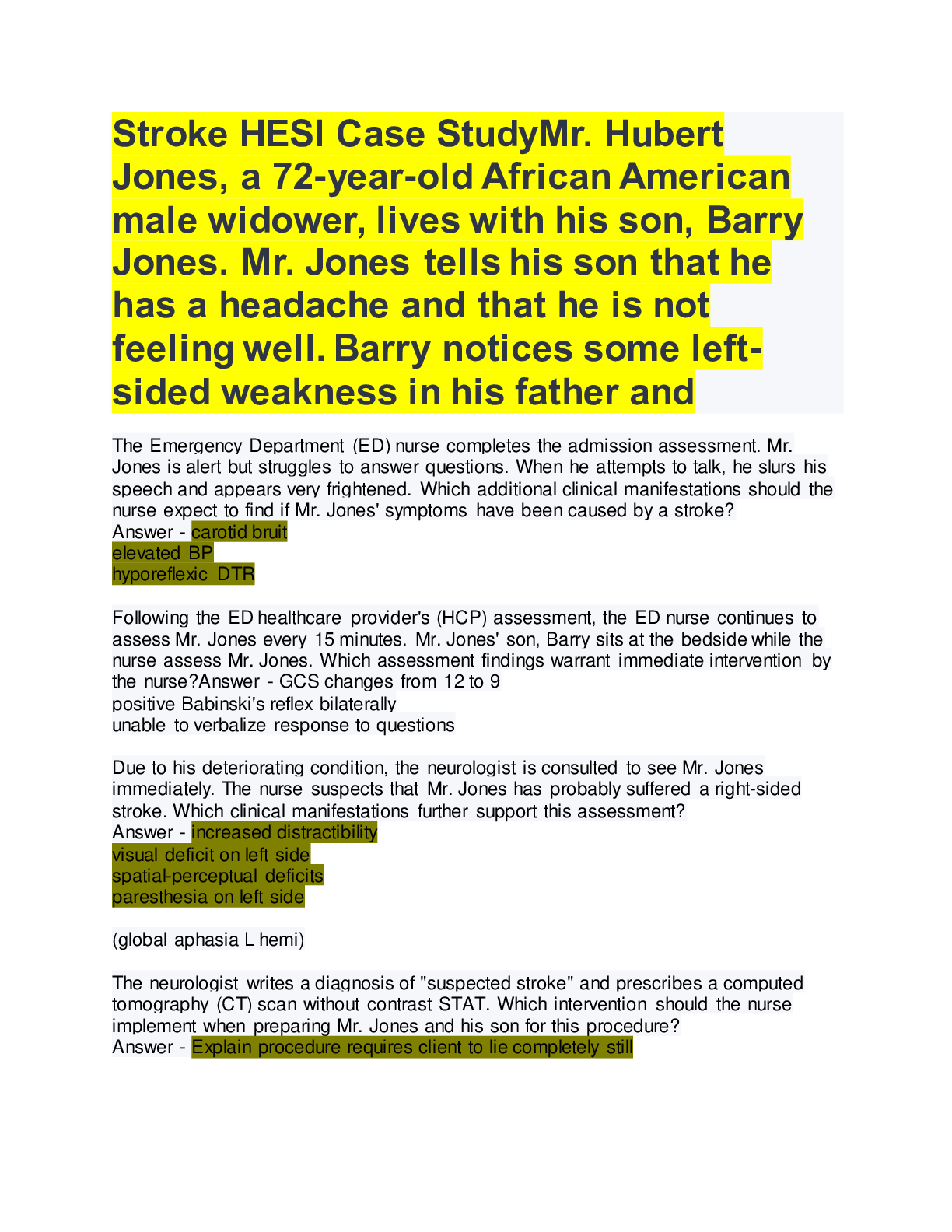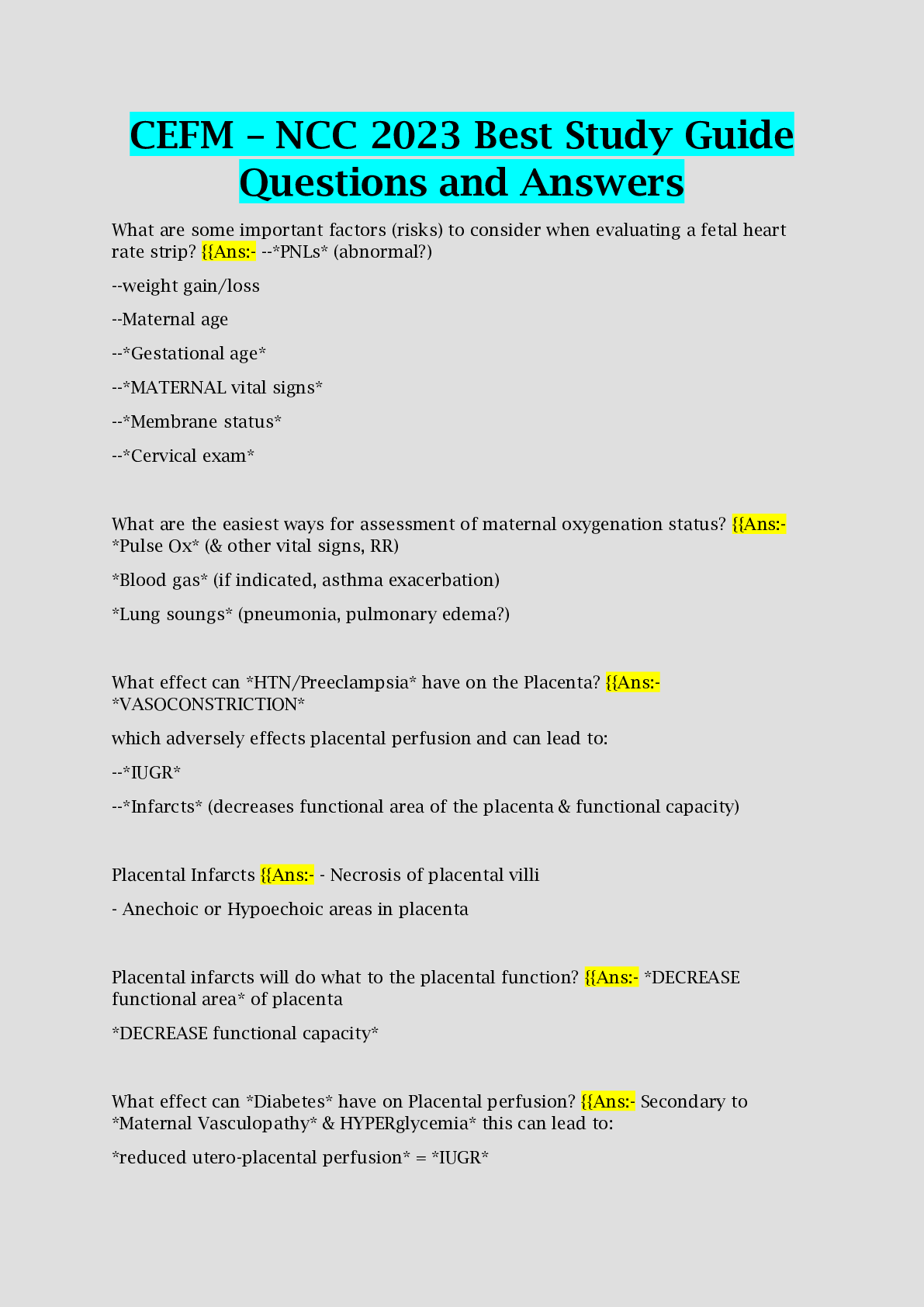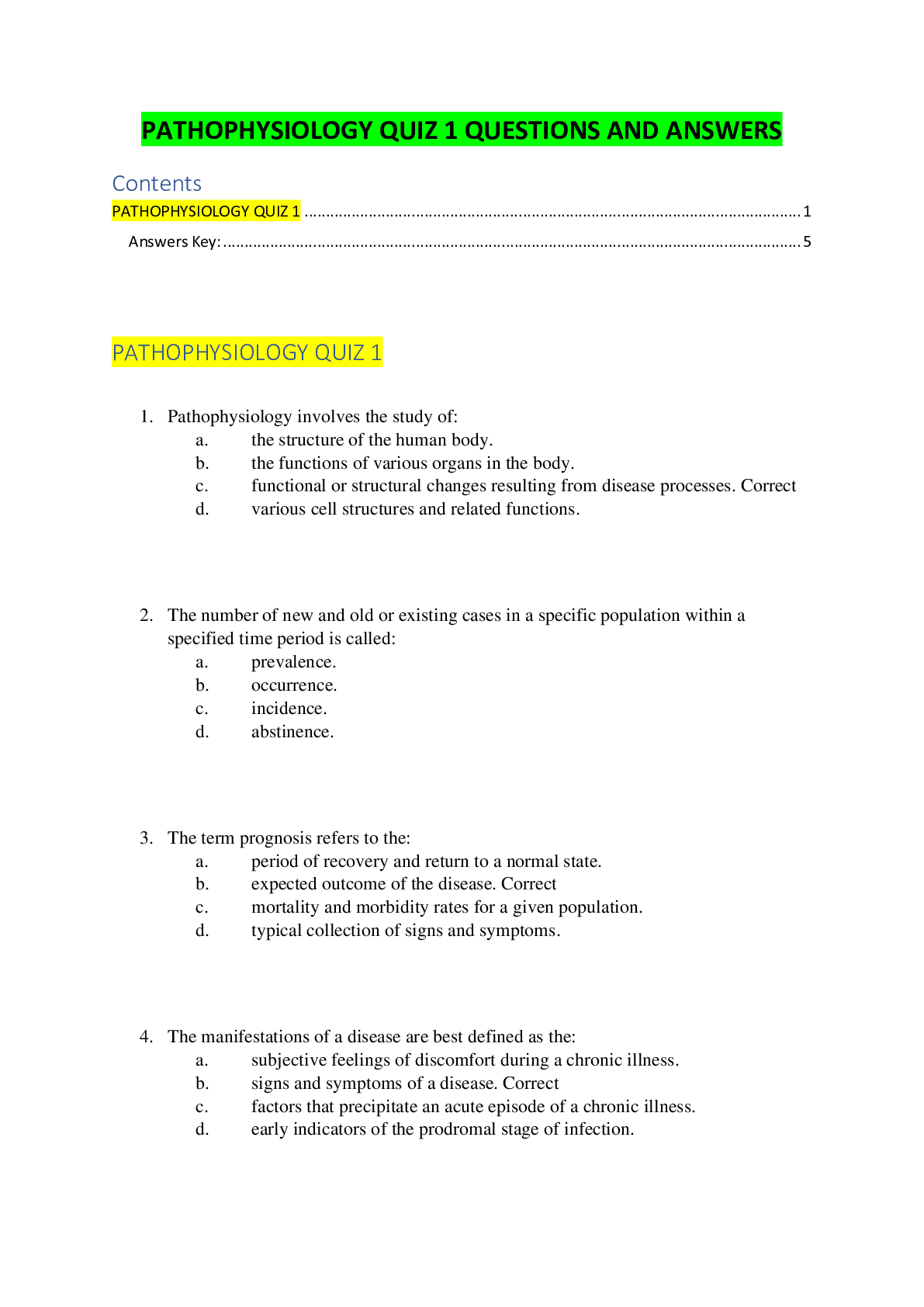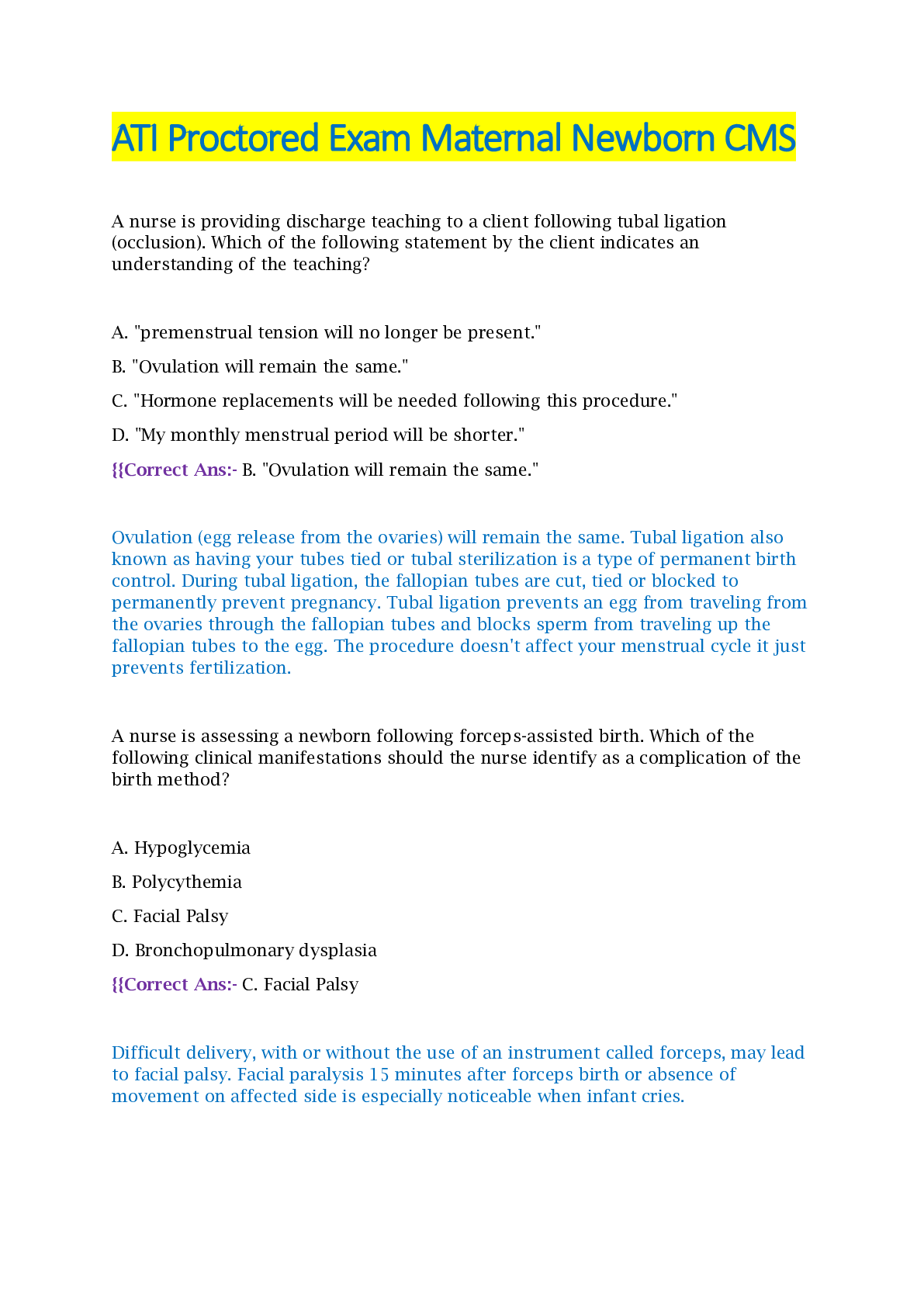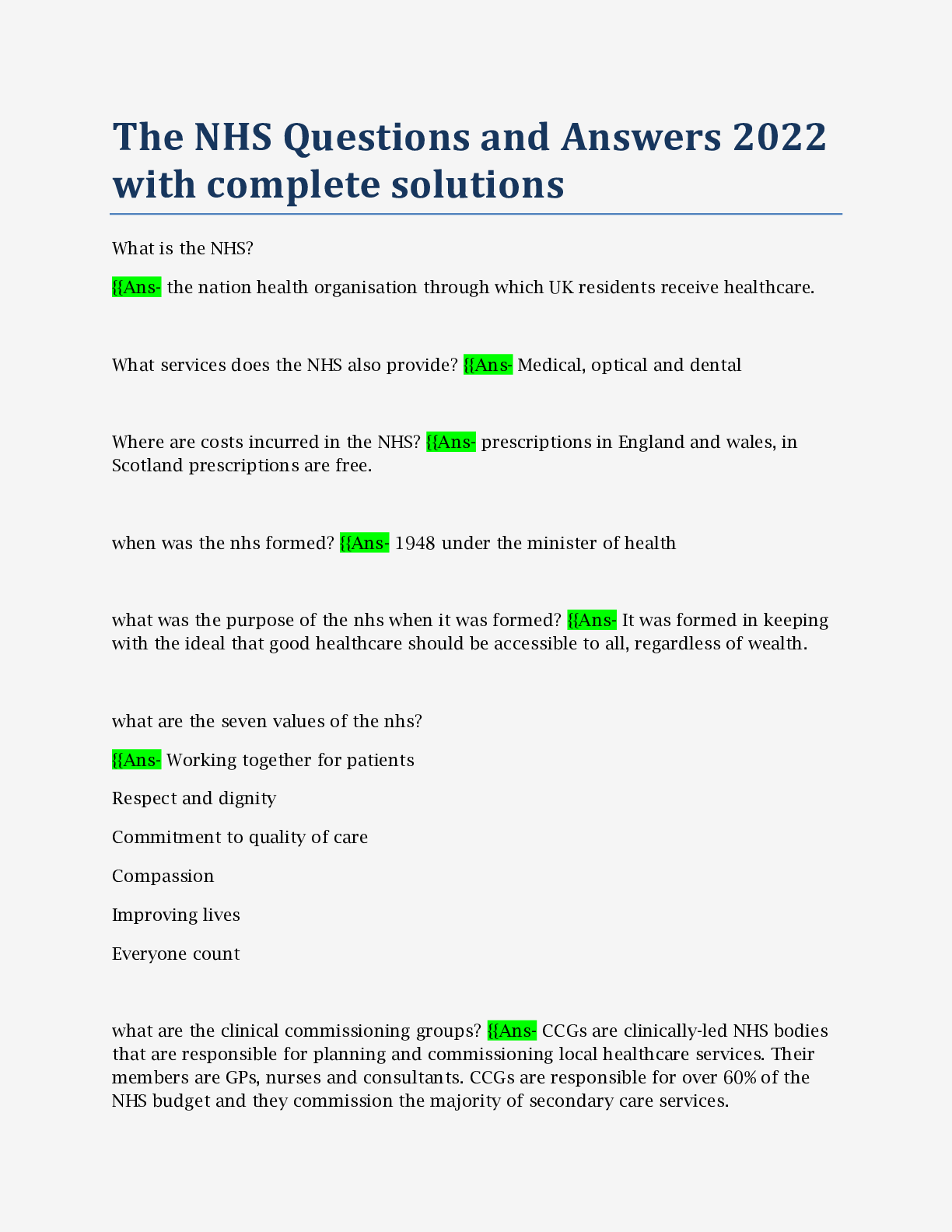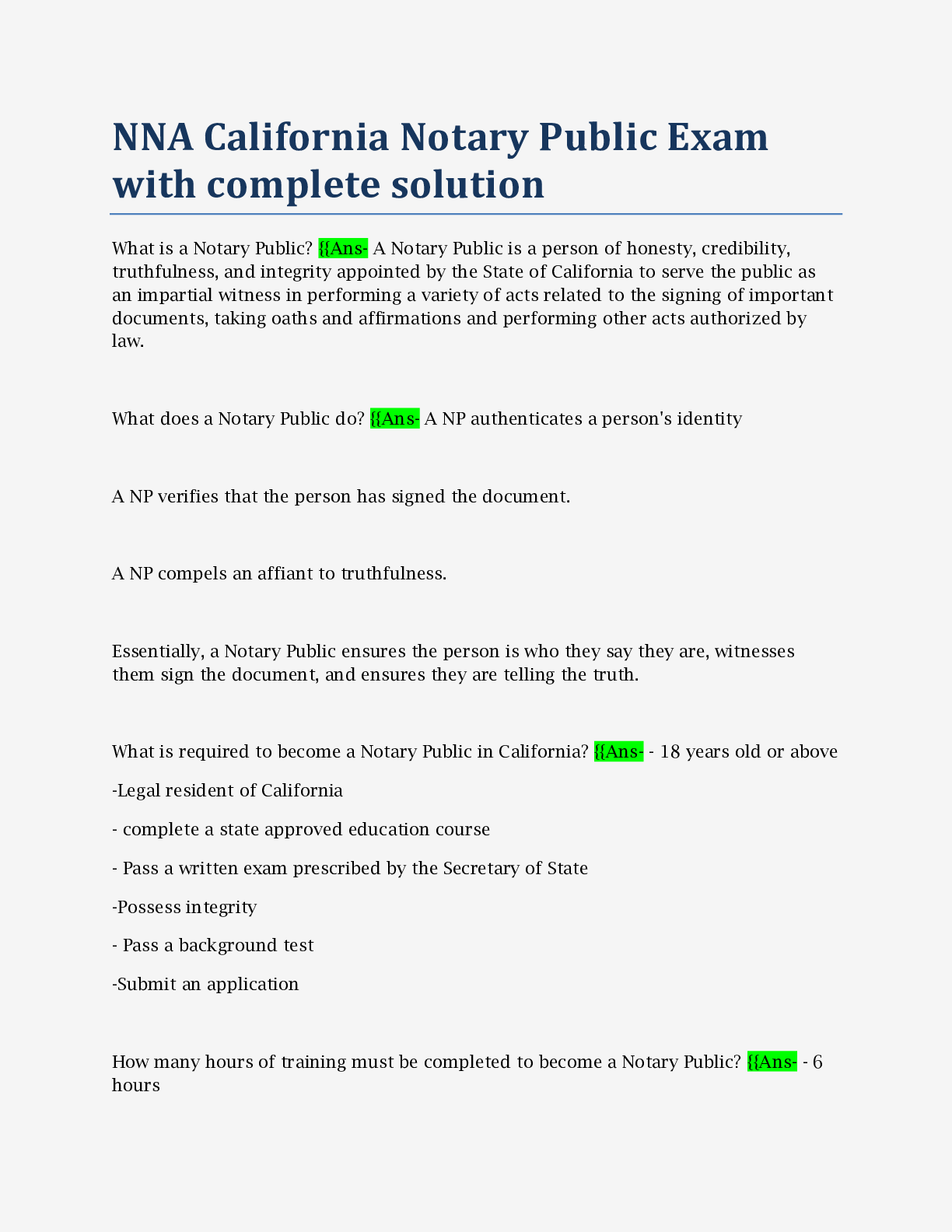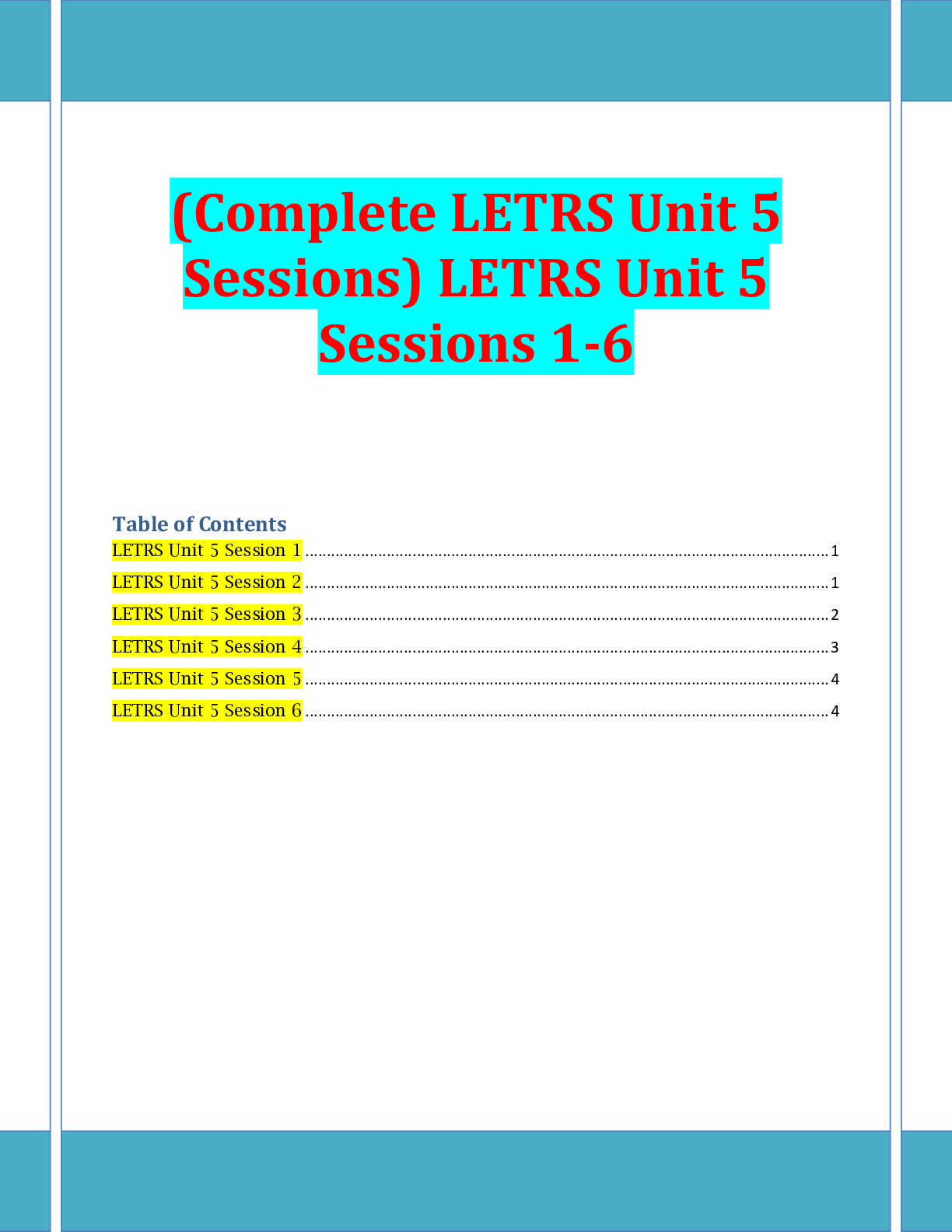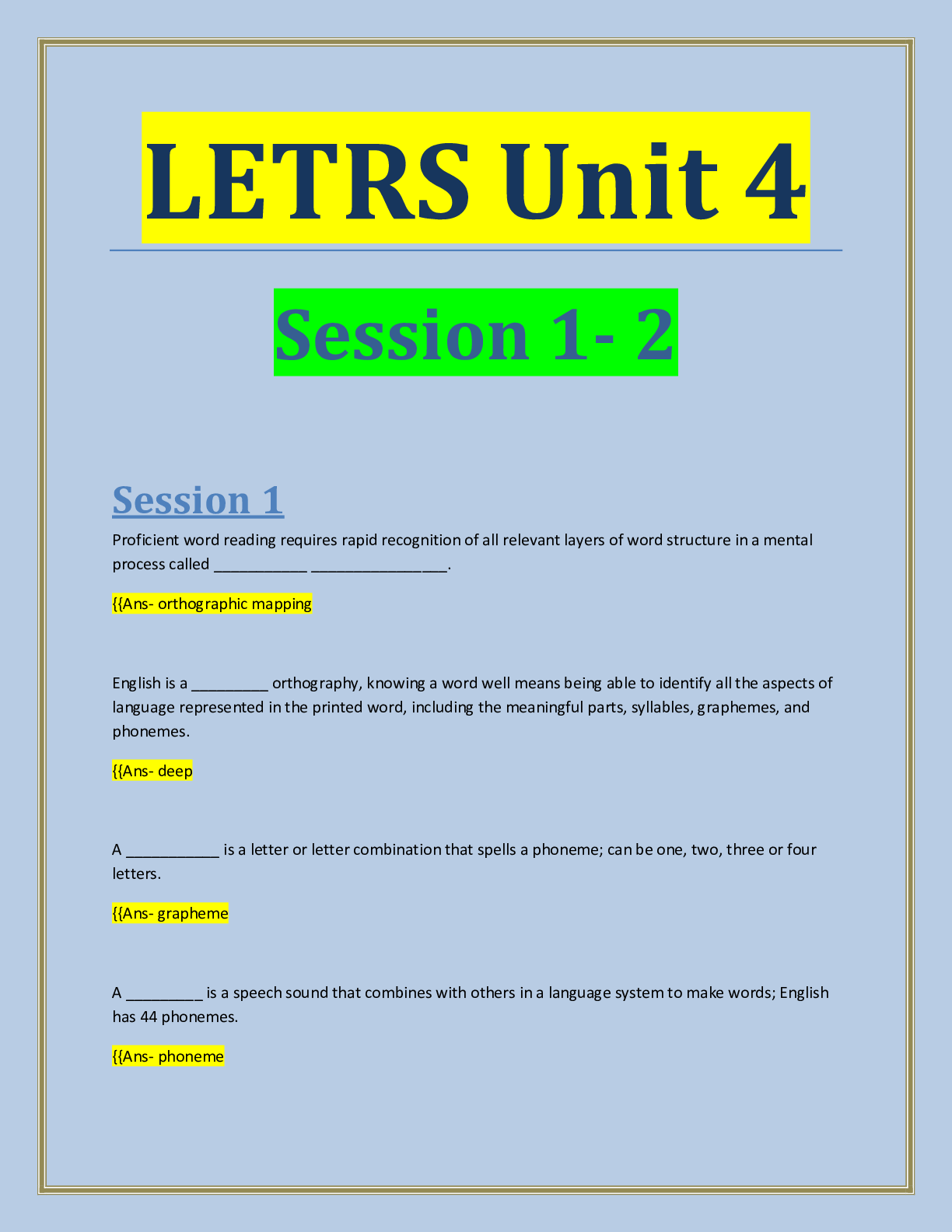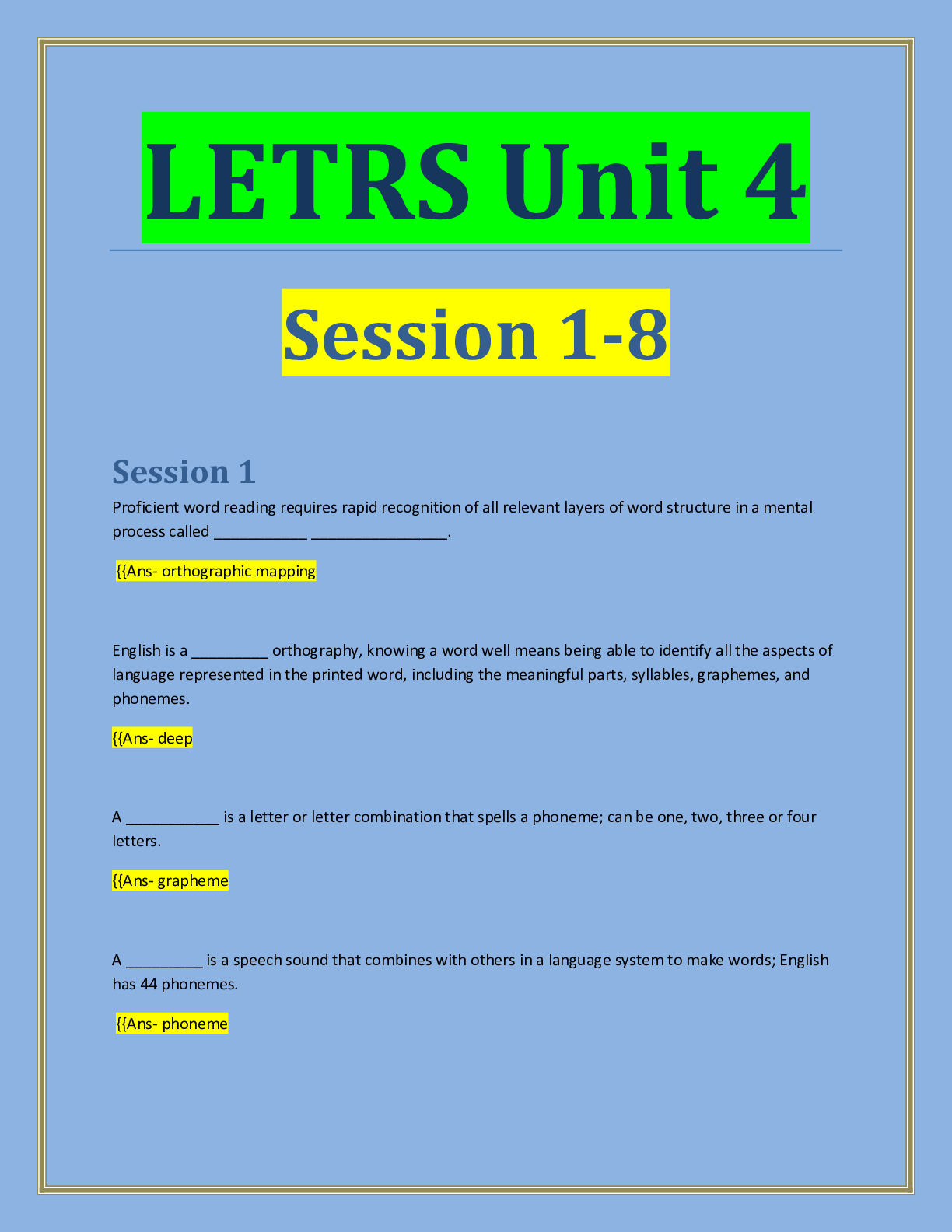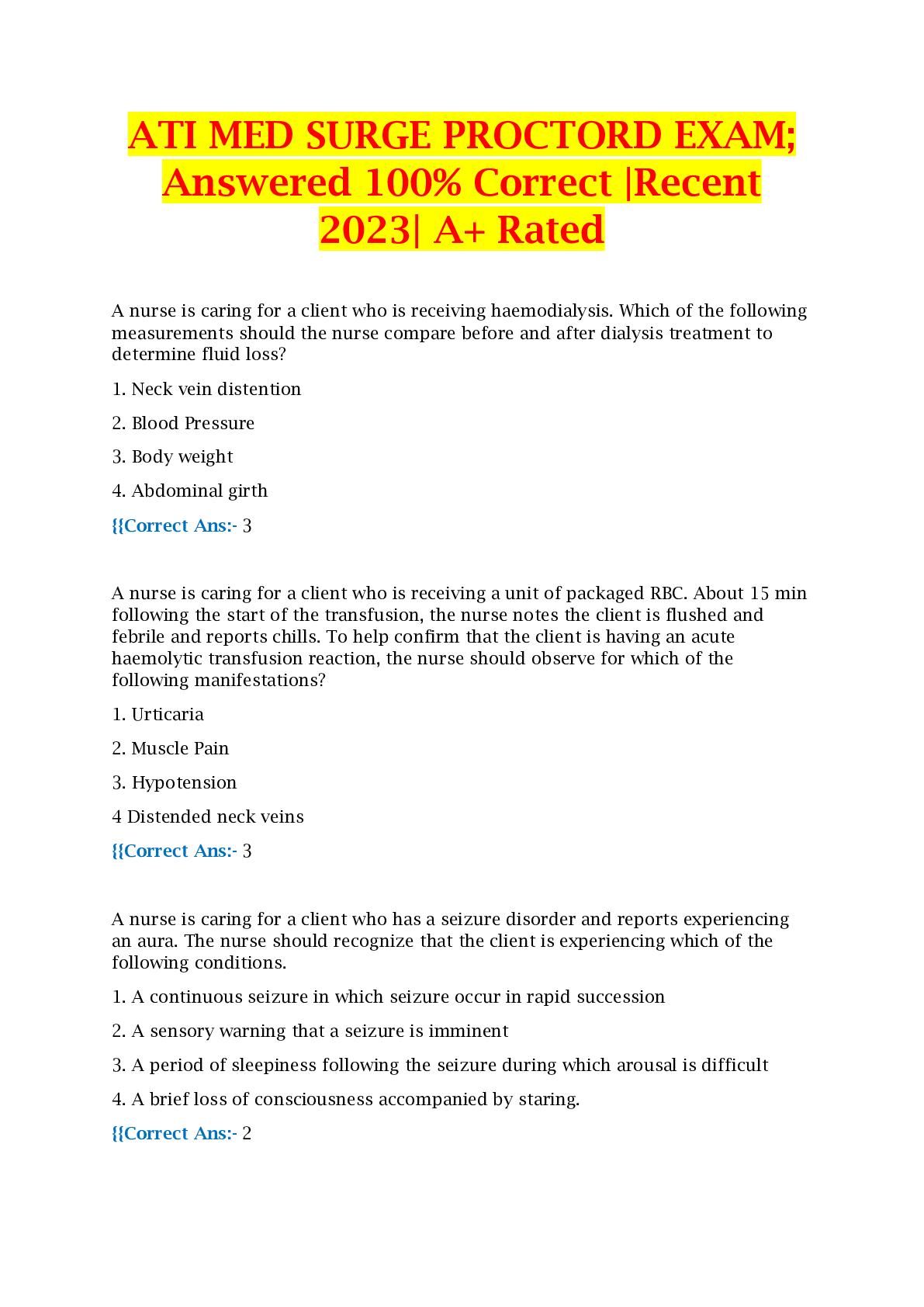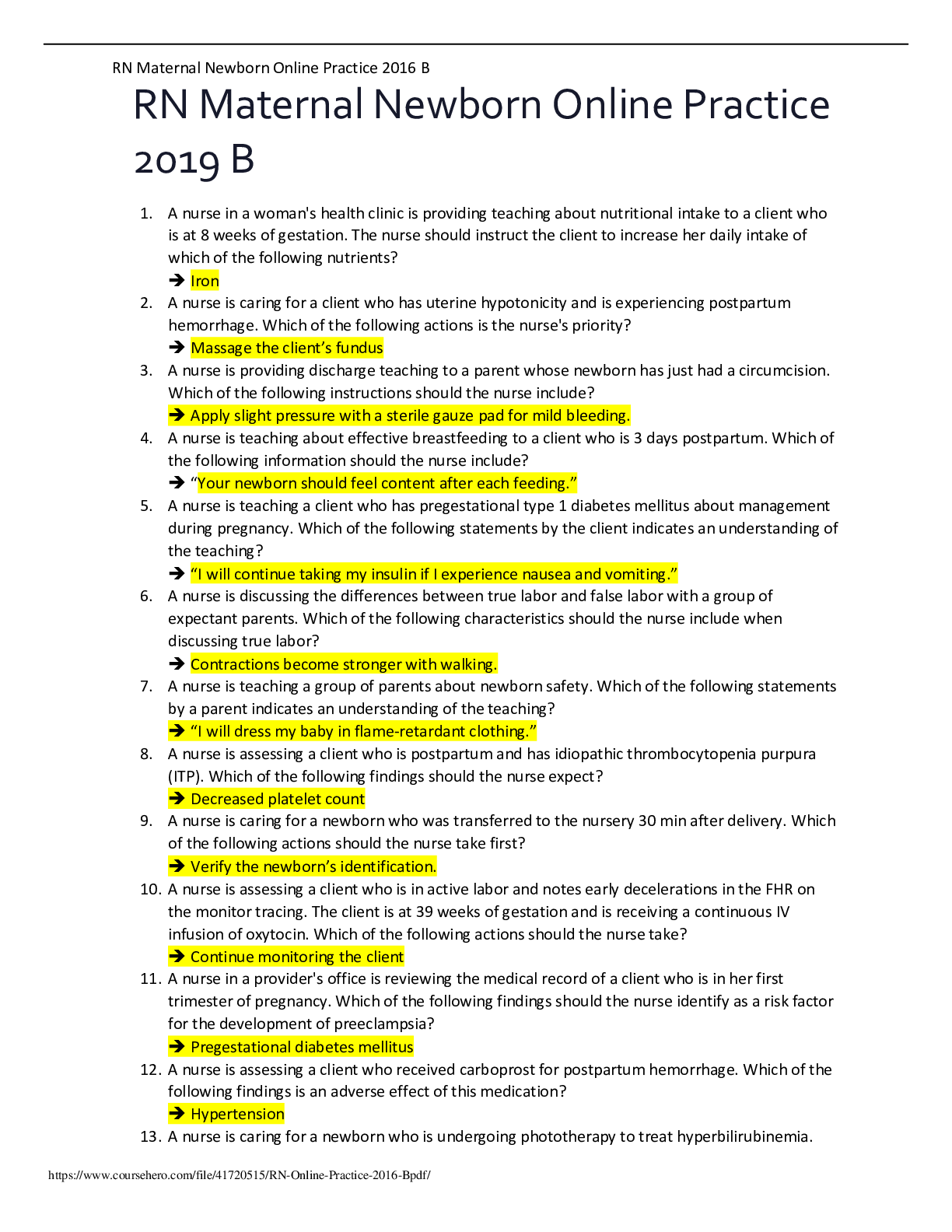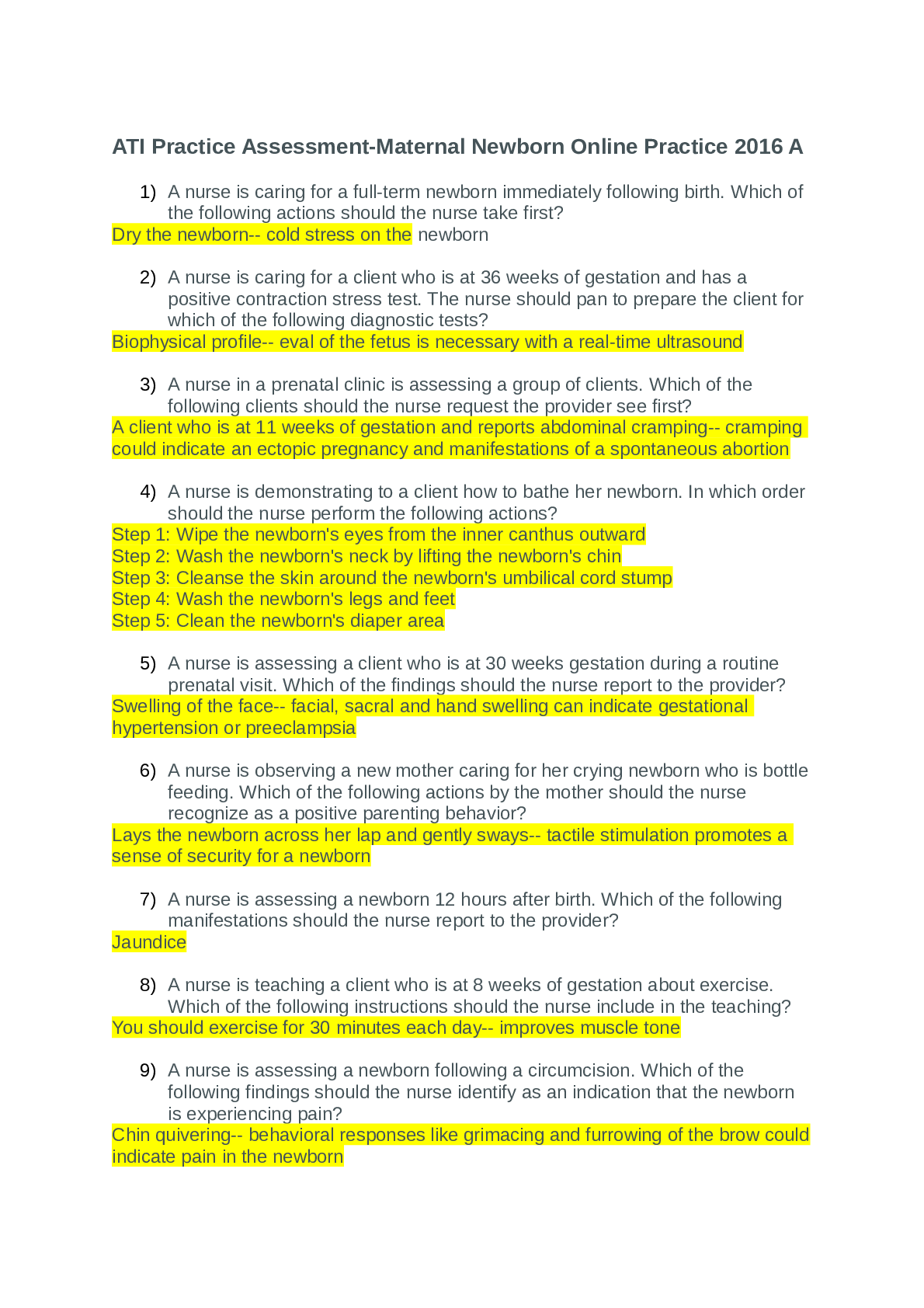Health Care > EXAM > RN Maternal Newborn Online Practice 2019 A (60 Questions Answered 100% Correct with Rationale |Verif (All)
RN Maternal Newborn Online Practice 2019 A (60 Questions Answered 100% Correct with Rationale |Verified
Document Content and Description Below
RN Maternal Newborn Online Practice 2019 A (60 Questions Answered 100% Correct with Rationale |Verified >>A nurse is caring for a client who is to receive oxytocin to augment her labor. Which of th... e following findings contraindicates the initiation of the oxytocin infusion and should be reported to the provider? Late decelerations Moderate variability of the FHR Cessation of uterine dilation Prolonged active phase of labor - ANS: Late decelerations - indicative of uteroplacental insufficiency. Therefore, this is a contraindication for the administration of oxytocin and should be reported to the provider. Moderate variability of the FHR - an expected assessment finding associated with normal fetal acid-base balance. It is not a contraindication to the administration of oxytocin. Cessation of uterine dilation - an indication for the initiation of an oxytocin infusion to augment the client's labor progression. Prolonged active phase of labor - an indication for the initiation of an oxytocin infusion to augment the client's labor progression. >>A nurse is caring for a patient that's 32 weeks gestation and has gonorrhea. The nurse should identify that the client is at an increased risk for which of the following complications? Excessive bleeding Oligohydramnios Premature ROM Proteinuria - ANS: Premature rupture of membranes - The nurse should identify that a client who is pregnant and has gonorrhea is at an increased risk for premature rupture of membranes, chorioamnionitis, preterm birth, neonatal sepsis, and intrauterine growth restriction. Excessive bleeding - A client who is pregnant and has gonorrhea is not at an increased risk for excessive bleeding. Oligohydramnios - A client who is pregnant and has gonorrhea is not at an increased risk for oligohydramnios. Oligohydramnios is a decrease in amniotic fluid and is associated with congenital anomalies such as renal agenesis and intrauterine growth restriction. Proteinuria - A client who is pregnant and has gonorrhea is not at an increased risk for proteinuria. Proteinuria is associated with preeclampsia. >>Nurse is performing a vag exam on a patient who is in labor and observes the umbilical cord protruding from the vagina. After calling for assistance, which actions should the nurse take? -Insert two gloved fingers into the vagina and apply upward pressure to the presenting part. -Wrap the visible cord tightly with sterile, dry gauze. -Apply oxygen to the client at 2 L/min via nasal cannula. -Place the client in the lithotomy position and apply fundal pressure. - ANS: Insert two gloved fingers into the vagina and apply upward pressure to the presenting part. - The nurse should quickly apply gloves and insert two fingers into the vagina toward the cervix, exerting upward pressure onto the presenting part to relieve umbilical cord compression and increase oxygenation to the fetus. Wrap the visible cord tightly with sterile, dry gauze. - The nurse should wrap the visible cord with a loose sterile towel saturated with warm 0.9% sodium chloride solution, rather than with sterile, dry gauze. Apply oxygen to the client at 2 L/min via nasal cannula. - The nurse should apply oxygen to the client at 8 to 10 L/min via nonbreather mask. Place the client in the lithotomy position and apply fundal pressure. - The nurse should place the client into a modified Sims position, knee-chest position, or extreme Trendelenburg to attempt to relieve the compression of the umbilical cord. >>Nurse is teaching patient of 37 weeks gestation and has a prescription for a nonstress test. Which instructions should the nurse include? -Test should take 10-15 min to complete -You will lay in supine position throughout the test -You should not eat or drink for 2 hours before the test -You should press the handheld button when you feel your baby move - ANS: "You should press the handheld button when you feel your baby move." - The nurse should instruct the client to press the handheld button when the fetus moves. This action will mark the fetal monitor tracing with the client's reports of fetal movement. This will assist in the interpretation of the nonstress test to determine if it is reactive or nonreactive. The test should take 10 to 15 minutes to complete." - The nurse should instruct the client that the nonstress will take approximately 20 to 30 min, but more time might be required if the fetus is in a sleep state when the testing begins. "You will lay in a supine position throughout the test." - The nurse should instruct the client to be positioned in a reclining chair or semi-Fowler's position with a slight lateral tilt to ensure optimal uterine perfusion. "You should not eat or drink for 2 hours before the test." - The client is not required to be NPO before or during the procedure. The nurse can suggest the client drink orange juice to increase her blood glucose level which will stimulate fetal movements. >>A charge nurse on a labor and delivery unit is teaching a newly licensed nurse how to perform leopold maneuvers. Which images indicates the first step of leopold maneuvers? - ANS: 1st - During this step, the nurse palpates the client's abdomen with the palms to determine which fetal part is in the uterine fundus. This step also identifies the lie (transverse or longitudinal) and presentation (cephalic or breech) of the fetus. 2nd step of Leopold maneuvers: - During this step, the nurse uses the palms of the hands to determine the location of the smooth fetal back and the irregularly shaped, smaller fetal parts. 3rd step of Leopold maneuvers: - During this step, the nurse determines which fetal part is presenting in the pelvic inlet. The nurse gently grasps the lower uterine segment between the thumb and forefingers, pressing in slightly. 4th step of Leopold maneuvers: - During this step, the nurse faces the client's feet and uses the fingertips to palpate the cephalic prominence. This assessment allows the nurse to determine the attitude of the fetal head. >>Nurse in a provider's office is reviewing the medical record of a client who is in the 1st trimester of pregnancy. Which findings should the nurse identify as a risk factor for development of preeclampsia? Singleton pregnancy BMI of 20 Maternal age 32 years Pregestational DM - ANS: Pregestational diabetes mellitus - increases a client's risk for the development of preeclampsia. Other risk factors include preexisting hypertension, renal disease, systemic lupus erythematosus, and rheumatoid arthritis. Singleton pregnancy: - Multifetal gestation, rather than a single fetus pregnancy, increases a client's risk for the development of preeclampsia. BMI of 20 - Having a BMI greater than 30 increases a client's risk for the development of preeclampsia. Maternal age 32 years: A maternal age of younger than 19 or older than 40 increases the client's risk for the development of preeclampsia. [Show More]
Last updated: 2 years ago
Preview 1 out of 49 pages
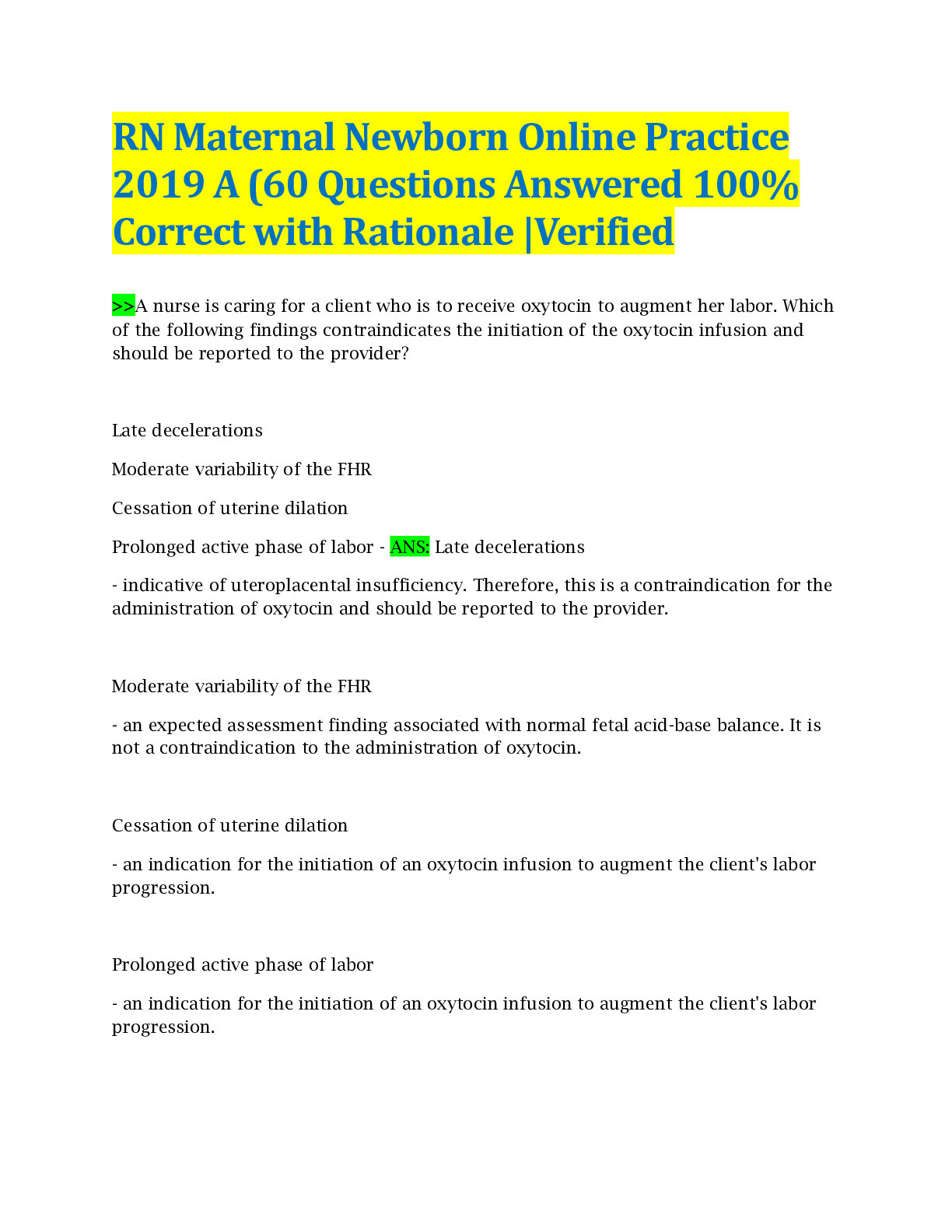
Buy this document to get the full access instantly
Instant Download Access after purchase
Buy NowInstant download
We Accept:

Reviews( 0 )
$10.00
Can't find what you want? Try our AI powered Search
Document information
Connected school, study & course
About the document
Uploaded On
May 08, 2023
Number of pages
49
Written in
Additional information
This document has been written for:
Uploaded
May 08, 2023
Downloads
0
Views
82

